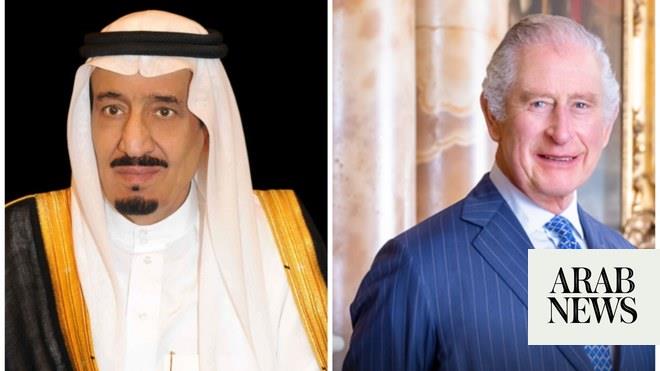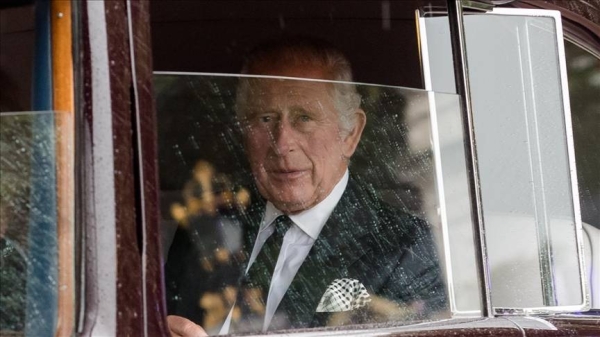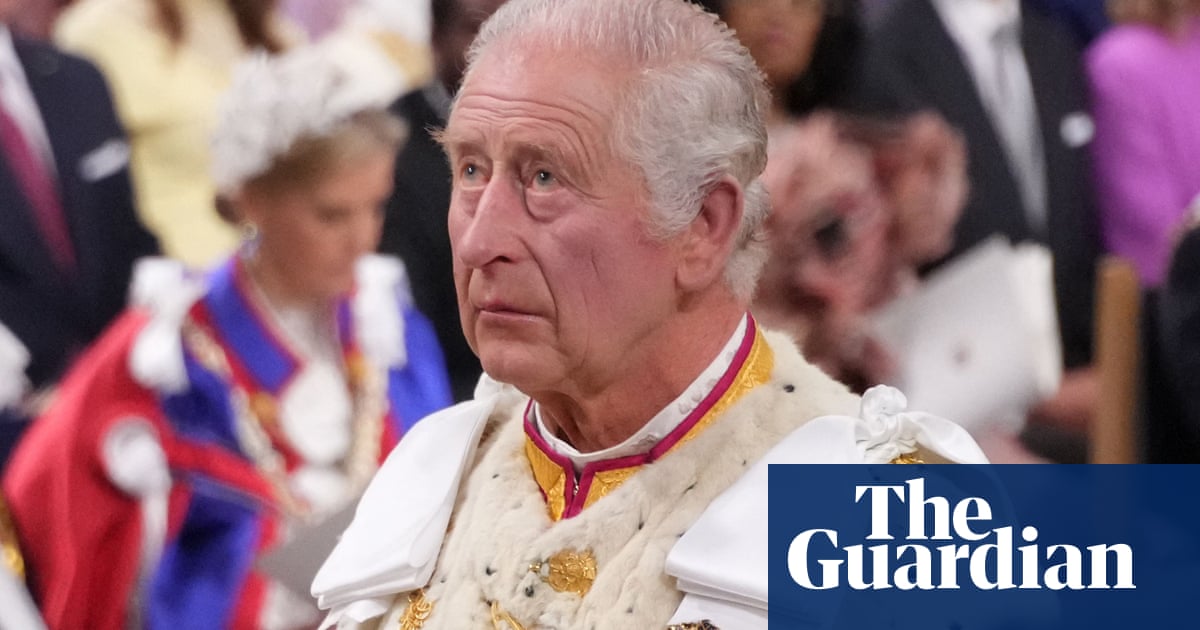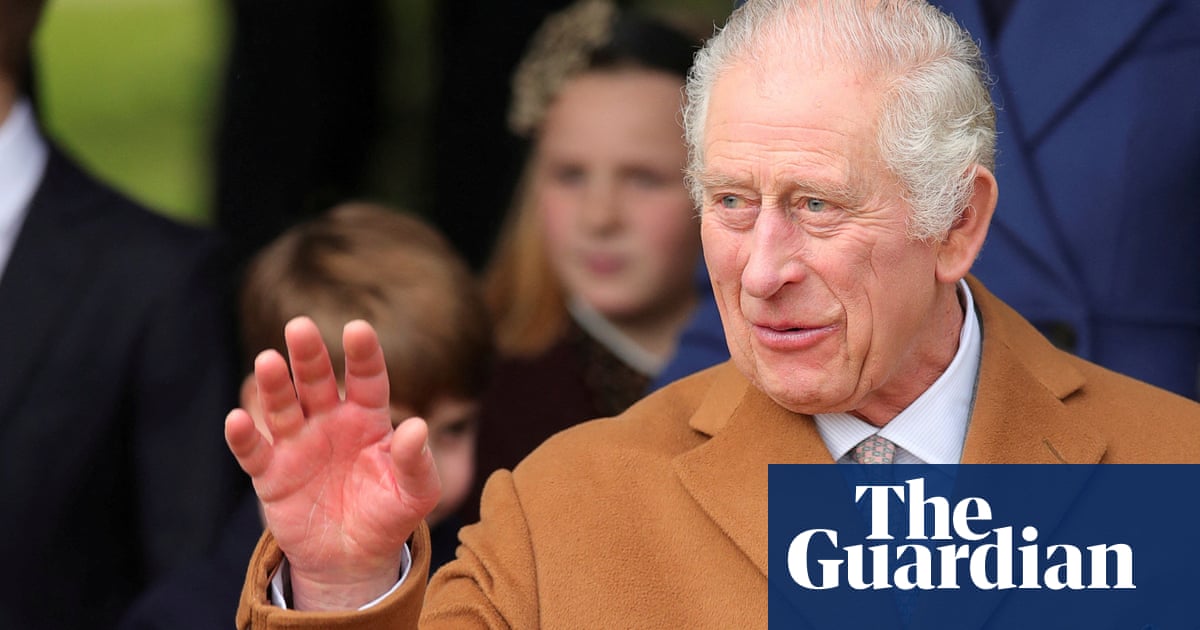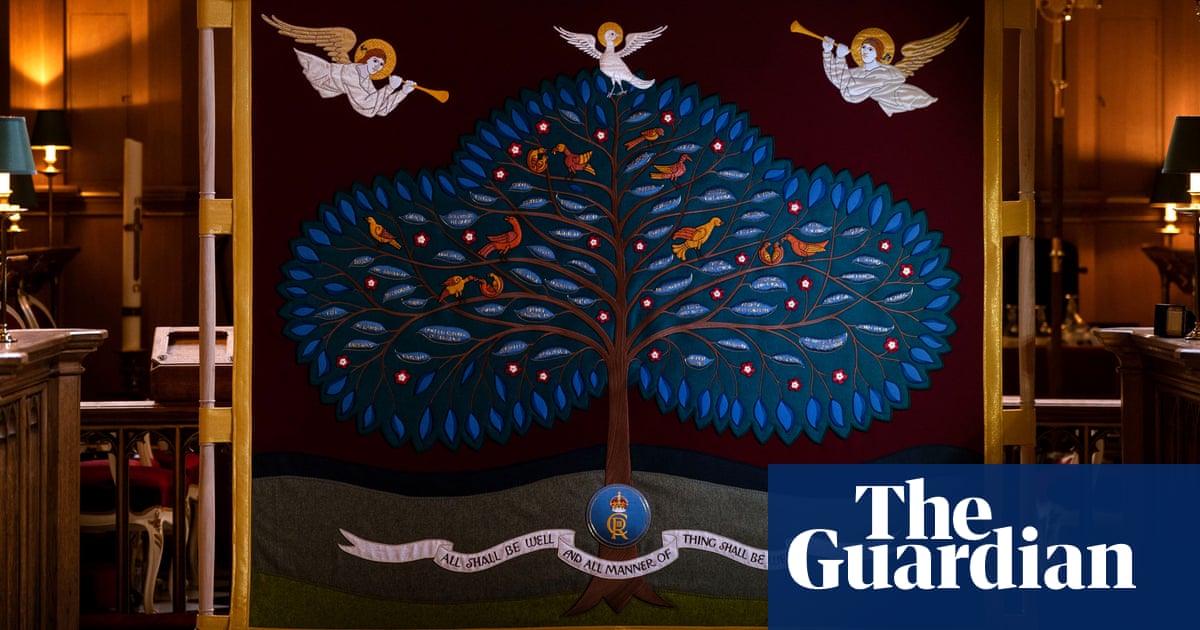
The king and the queen consort will be anointed behind a specially created screen of fine embroidery, held by poles hewn from an ancient windblown Windsor oak and mounted with eagles cast in bronze and gilded in gold leaf, Buckingham Palace has announced.
The anointing screen has been blessed at a special service at the Chapel Royal at St James’s Palace, and will be used at what historically has been viewed as the most sacred moment of the coronation.
The anointing is traditionally regarded as a moment between the sovereign and God, and the screen is to be used to give sanctity to this moment. Traditionally, the moment is not photographed or televised.
At Elizabeth II’s coronation, an opulent canopy of rich gold fabric was held aloft over the monarch’s head.
Charles’s screen will allow greater privacy as the archbishop of Canterbury pours the chrism, or holy oil, which has been specially blessed in Jerusalem, from a golden ampulla into the 12th-century coronation spoon. The archbishop will then anoint the king by making a cross on the hands, breast and head, and perform the same on Camilla.
The tradition of anointing dates back to the Old Testament, which describes the anointing of Solomon by Zadok the Priest and Nathan the Prophet, and was one of the medieval holy sacraments emphasising the spiritual status of the sovereign.
The anointing screen, including its four oak wooden poles, is 2.6 metres tall and 2.2 metres wide. The wooden framework, designed and created by Nick Gutfreund of the Worshipful Company of Carpenters, is made from a windblown tree from the Windsor estate originally planted in 1765. The poles have been limed and waxed, and at the top of each are mounted two eagles cast in bronze and gilded in gold leaf.
The form of an eagle has longstanding associations with coronations. Eagles have appeared on previous coronation canopies, including that used by Elizabeth II in 1953. The ampulla used for anointing is eagle-shaped.
Embroidered by the Royal School of Needlework and by Digitek Embroidery, and donated by the City of London Corporation and participating livery companies, the screen is three-sided, with the open side to face the high altar in Westminster Abbey.
Designed by the iconographer Aidan Hart, the central design takes the form of a tree, which includes the names of the 56 Commonwealth nations, with the king’s cypher at the base, and is inspired by the stained-glass sanctuary window in the Chapel Royal at St James’s Palace, designed for the late queen’s golden jubilee.
Two sides feature a simple cross in maroon gold, blue and red, inspired by the colours and patterning of the Cosmati pavement at Westminster Abbey where the anointing will take place. The cloth is made of wool from Australia and New Zealand, woven and finished in UK mills.
Hart said: “The inspiration of the Chapel Royal stained-glass window was personally requested by his majesty the king. Each and every element of the design has been specifically chosen to symbolise aspects of this historic coronation and the Commonwealth, from the birds that symbolise the joy and interaction among members of a community living in harmony, to the rejoicing angels and the dove that represents the Holy Spirit.”
The screen will be held by service personnel from regiments of the Household Division, replacing the knights that usually held the canopy. In bygone days, being selected to bear the canopy was seen as a sign of being in royal favour.
At Charles II’s coronation in 1661, there was an unseemly squabble between the barons of the Cinque Ports, charged with holding the silk canopy above the king’s head, and the king’s footmen. One of the job’s perks, according to the barons, was that they got to chop up the banner and each keep a piece. But they were challenged by the footmen, who also wanted the canopy, and a fight broke out, which the barons won.
On Friday, the Stone of Destiny, the ancient symbol of Scotland’s monarchy, left Edinburgh Castle for the first time since its return to Scotland in 1996 to embark on its journey to Westminster Abbey.
The 125kg stone was piped out during a ceremonial send-off, and will be placed beneath the coronation chair, which was specially built in the 14th century with the stone underneath. Getting it back in will be a challenge.
“It’s extremely tight. In fact it will not go in straight. It’s got bare millimetres to spare,” said Colin Muir, a senior stone conservator at Historic Environment Scotland, who has the task of helping to ensure it is installed.
Also known as the Stone of Scone, it was used for centuries in the coronations of monarchs and the inauguration of Scottish kings, but in 1296 after his invasion into Scotland during the wars of independence, England’s King Edward I removed the stone from Scotland. In about 1300 he had a chair built to hold the stone and installed it at Westminster Abbey.
For 700 years the stone was housed in the abbey, although in 1950 it was taken in a daring raid by four Scottish students, only to be found eventually at Arbroath Abbey.
It was officially returned to Scotland in 1996 and usually sits next to the crown jewels of Scotland in Edinburgh Castle’s Crown Room.









